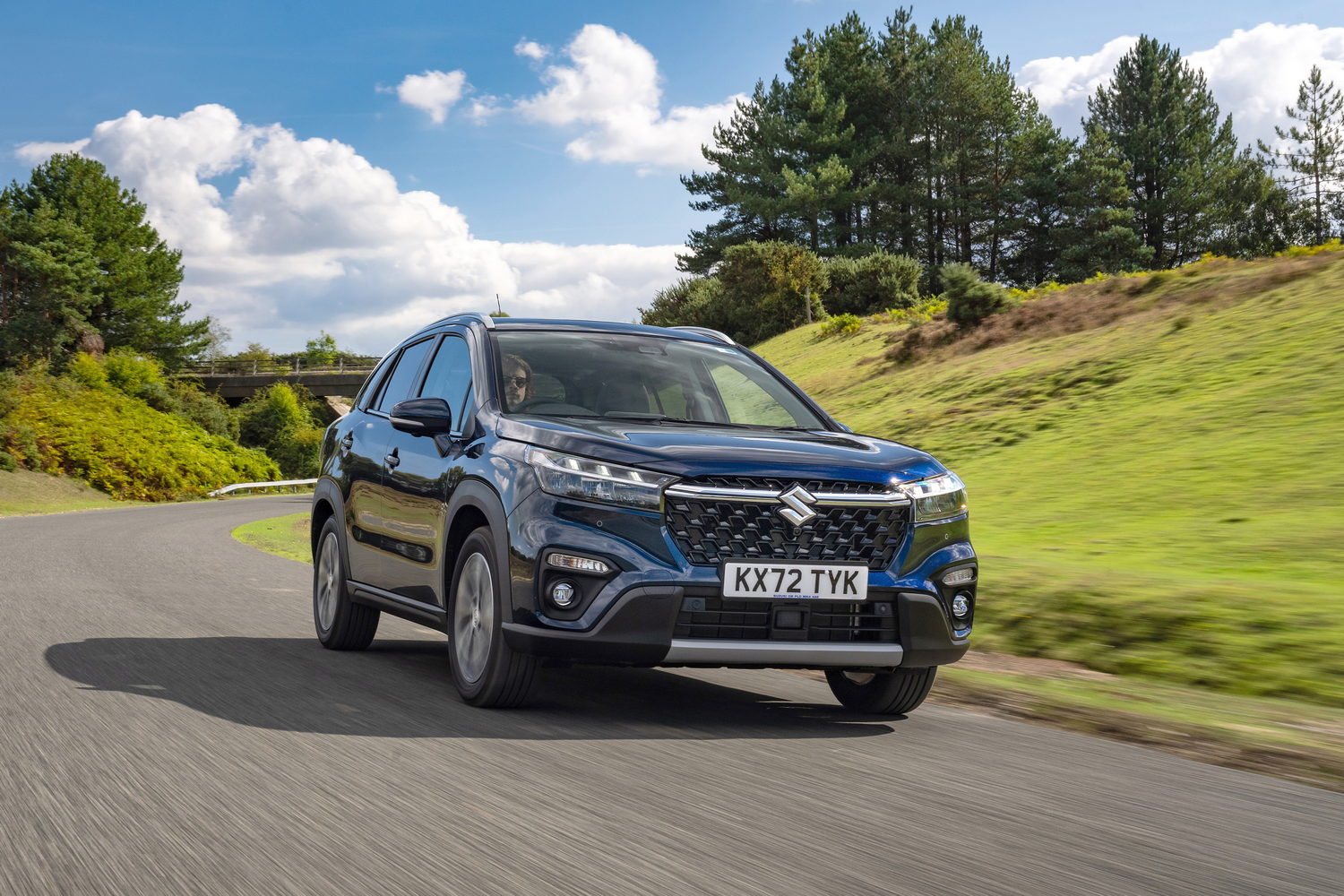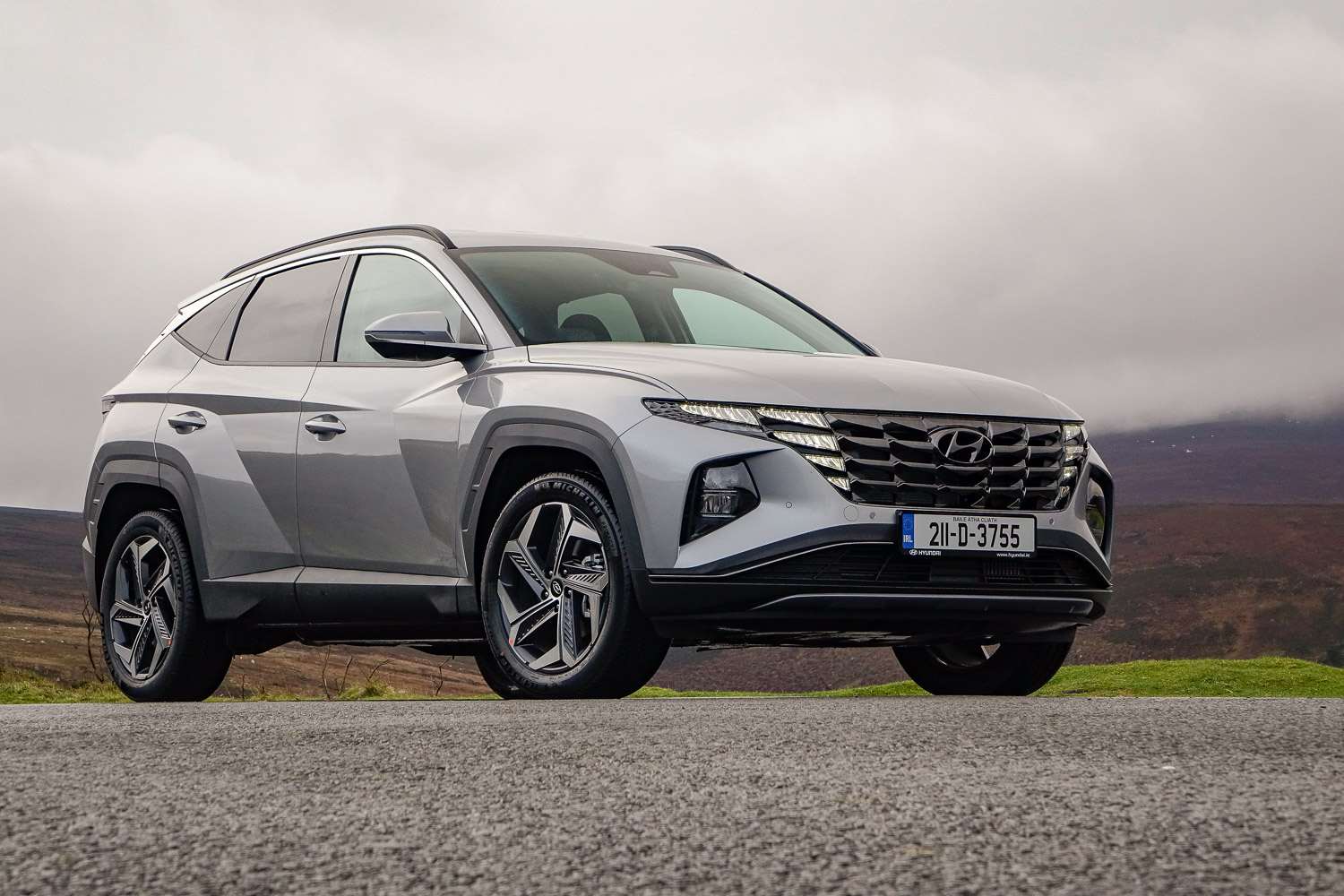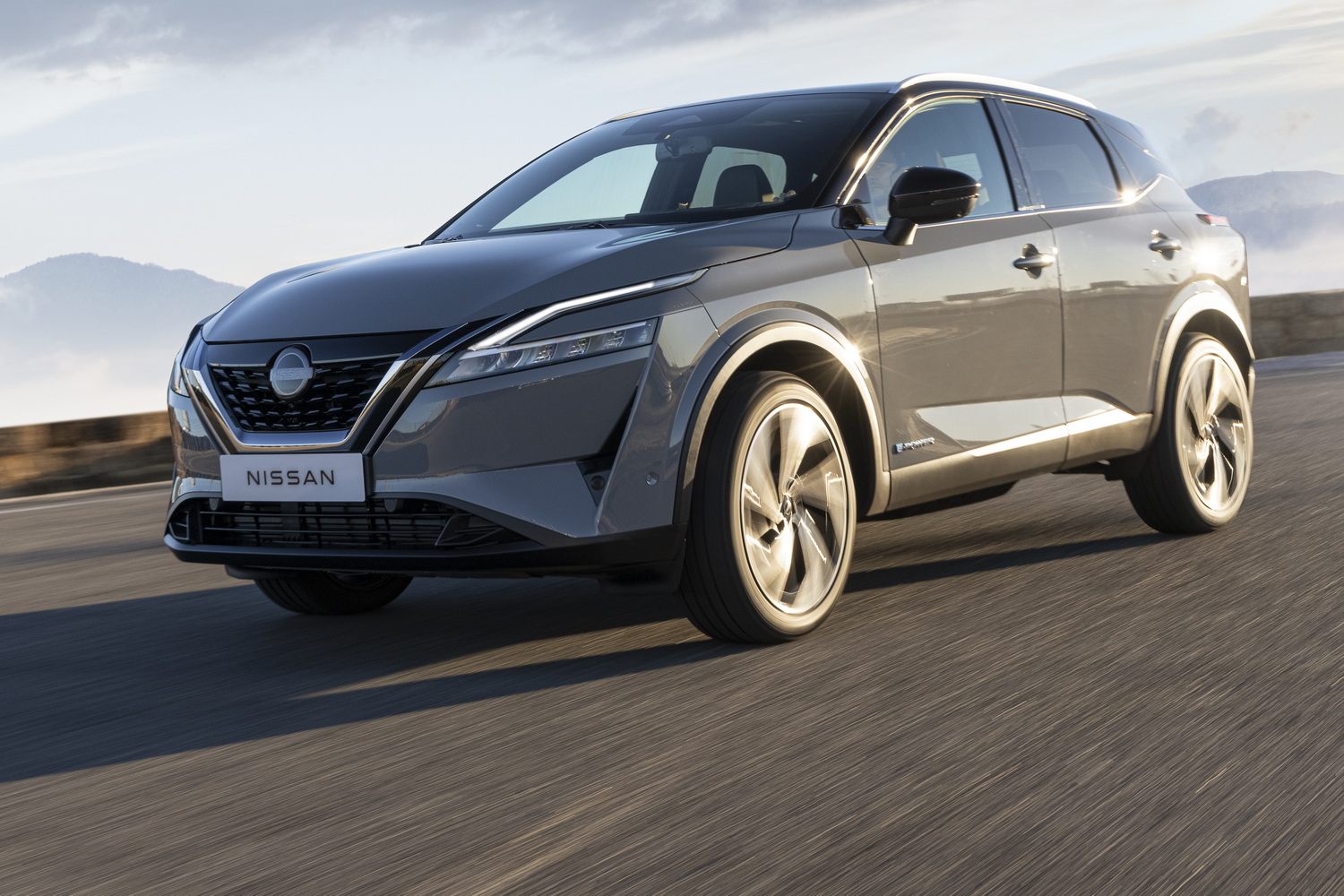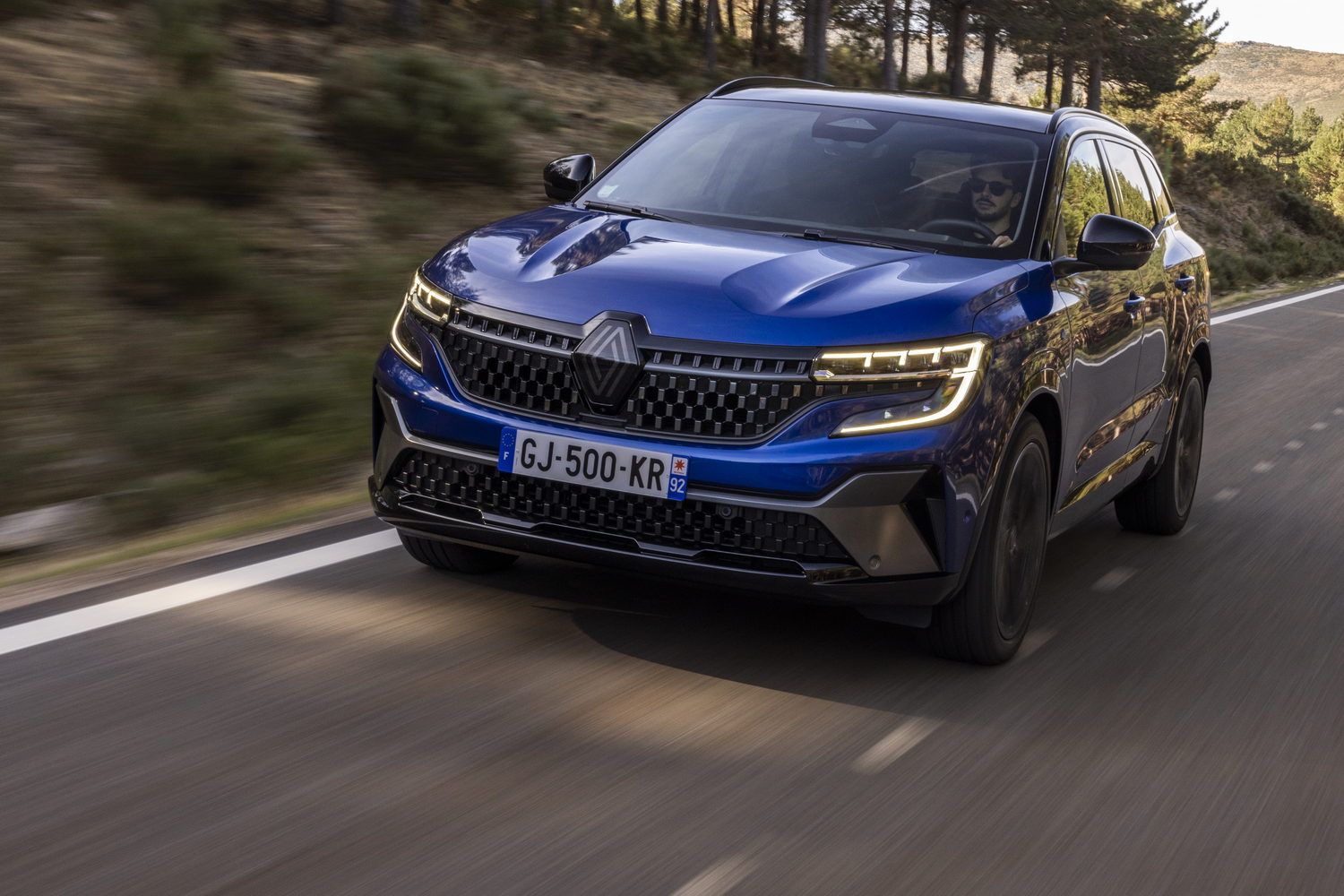The new Suzuki S-Cross has already been established with mild-hybrid technology, but now there's a new, even more electrified version. To prevent confusion, the mild hybrid, which was previously just called the S-Cross Hybrid, is now the Mild Hybrid and this new model is called the Full Hybrid. It combines a 1.5-litre petrol engine with an electric motor-generator to offer lower emissions and better economy, but it will also be the only automatic option in the S-Cross line-up. So does this make more sense than the existing Mild Hybrid variants?
In the metal
Most observers - us included - will find it very difficult to tell the S-Cross Full Hybrid apart from its Mild Hybrid sibling. In fact, the only visual difference is the 'Hybrid' badge on the tailgate, which is blue-on-white in the Mild Hybrid and white-on-blue in the Full Hybrid. Alternatively, you could look through the window and take a look at the gear selector. Early on, the mild hybrid S-Cross was available in manual and automatic forms, but from now on the Mild Hybrids will all be manuals, while the Full Hybrids are exclusively automatic.
The only other way to tell the difference is to look under the boot floor. In the Mild Hybrid, there's an underfloor storage area, giving the car a competitive 430-litre total boot space, but the Full Hybrid sacrifices that space to accommodate the hybrid system. That means the boot only holds 293 litres, and that doesn't look so competitive, but the space above the false floor is unchanged.
Otherwise, the S-Cross Full Hybrid is just the same as the Mild Hybrid, and that means you get the same chunky design and the same mixed bag of an interior. Suzuki created a whole new dashboard for the new S-Cross, and it's dominated by a big central touchscreen that measures seven inches from corner to corner if you opt for the basic Motion model. Choose the more upmarket Ultra, though, and it grows to nine inches.
Either way, the new screen is much more modern than the systems found in some smaller Suzuki products, but it's far from perfect. Had this car launched a decade ago, we might have called it innovative, but now it looks a bit clunky and uninspiring. It does the job, but you're better off plugging your phone in and using the Android Auto or Apple CarPlay systems, both of which are thankfully included as standard.
The screen isn't the only thing about the S-Cross's cabin that feels a little long in the tooth, either. The cabin plastics are quite dull and cheap-feeling, which gives it a budget feel despite the design, which is reasonably modern. A few flashes of silver-coloured plastic around the steering wheel, air vents and gear lever lift the mood slightly, but only slightly. Alongside rival products from brands such as Skoda, which was formerly considered 'budget', the S-Cross feels a bit low-rent.
That said, build quality isn't that bad. The plastics may not be fancy, but all the switchgear feels robust and there's an overwhelming sense of durability, if not comfort. Like a no-frills commercial vehicle, you get the impression it's built to withstand punishment, rather than to feel premium.
Nor is it designed to feel particularly spacious. There's sufficient room in the front, although headroom will be a little tight for those of above-average height, but the rear space is a little cramped. Legroom is no more than adequate, and headroom is decidedly underwhelming - particularly if you choose the Ultra with its panoramic sunroof. Then there's the shrunken boot. The Mild Hybrid's 430-litre load space isn't huge, but the sub-300-litre space in the Full Hybrid looks decidedly meagre. You get more room in the back of a VW Polo.
Driving it
The S-Cross Full Hybrid's powertrain is essentially the same as that of the Vitara Full Hybrid we've already tested, and that's bad news, because it doesn't work especially well. Although Suzuki promised better economy and lower emissions than the 1.4-litre Mild Hybrids, the 1.5-litre Full Hybrid Vitara isn't as easy or as pleasant to drive.
It's much the same story in the S-Cross, where the hybrid system feels reluctant and recalcitrant. In fairness, that's largely the fault of the gearbox, which is operated in the same manner as a conventional automatic, but it doesn't behave that way. That's because it's really an automated manual transmission, using hydraulics to change gear instead of depending on the driver. That means gear shifts can take an age, and there's no guarantee the gear it chooses will be appropriate.
As a result, acceleration is sluggish - 0-100km/h takes a glacial 13.5 seconds - and very noisy, as the gearbox clunks through ratios and the engine thrashes its way up the rev range. That said, it's much quieter if you're gentler with the accelerator, although it's still less refined than modern hybrid systems and even the aging 1.8-litre hybrid powertrain found in the Swace estate car.
That's partly because the S-Cross doesn't use the 33hp electric motor all that much, preferring to team that power with the 115hp might of the petrol engine. It does cut the engine when you're coasting, crawling, or using a very light throttle input, but it usually combines the two motors for more performance.
As a result, this top-of-the-range Ultra model with Suzuki's AllGrip all-wheel-drive system is only marginally more economical than the equivalent manual Mild Hybrid, which burns 5.9 litres of unleaded every 100km, compared with 5.8 litres/100km for the Full Hybrid. And with CO2 emissions of 132g/km, it's in the same tax bracket as the Mild Hybrid, too. Admittedly, the Full Hybrid is fitted with the automated transmission, which makes that gap larger than it appears, but for our money, the Mild Hybrid's improved drivability puts it ahead of its sibling.
All that said, both cars have some off-road capability, and although front-wheel-drive versions will be more economical, an AllGrip-equipped S-Cross will prove more than capable enough off-road. Our test car certainly conquered more demanding terrain than most customers will ever show it.
Powertrain aside, it also drives quite well on the road. The steering is light and that makes it easy to use in town, and although it still feels a little numb, the S-Cross handles relatively well. There's lots of grip and the body lean is controlled, allowing you to corner quickly without making yourself or your passengers feel ill. More importantly, the visibility is good, and the turning circle is small enough to make manoeuvring relatively simple.
The S-Cross also rides well, even if the Full Hybrid doesn't feel quite as supple as the Mild Hybrid. It has a slightly less settled feel, even over relatively smooth surfaces, but it never feels too stiff, and it won't jolt you uncomfortably every time you hit a bump. Broken surfaces will jiggle you about a bit, but it rarely feels unpleasant whether you're cruising around town or down the motorway.
What you get for your money
S-Cross Full Hybrid prices start from €31,895, making the car about €2,000 more expensive than the standard Mild Hybrid. That money pays for the basic Motion model, which comes with 17-inch alloy wheels, heated front seats and parking sensors at the front and rear, as well as keyless entry and a seven-inch touchscreen infotainment system with the Apple CarPlay and Android Auto smartphone integration technology. Two-zone climate control and a reversing camera are also included as standard. For those who want more, an Ultra trim will arrive early next year, bringing with it a 360-degree parking camera, leatherette upholstery and a larger touchscreen, as well as a panoramic sunroof.
Summary
As with the Vitara Full Hybrid, the hybrid S-Cross doesn't live up to the billing. We weren't great fans of the automatic mild hybrids, but for all the Full Hybrid's promise of low emissions and fuel economy, it somehow conspires to be less appealing. It's more infuriating to drive and less practical, but that's entirely down to the powertrain. The car in which it's installed remains a solid budget option - even with the slightly smaller boot - it just looks a bit dated alongside more mid-market rivals.



































